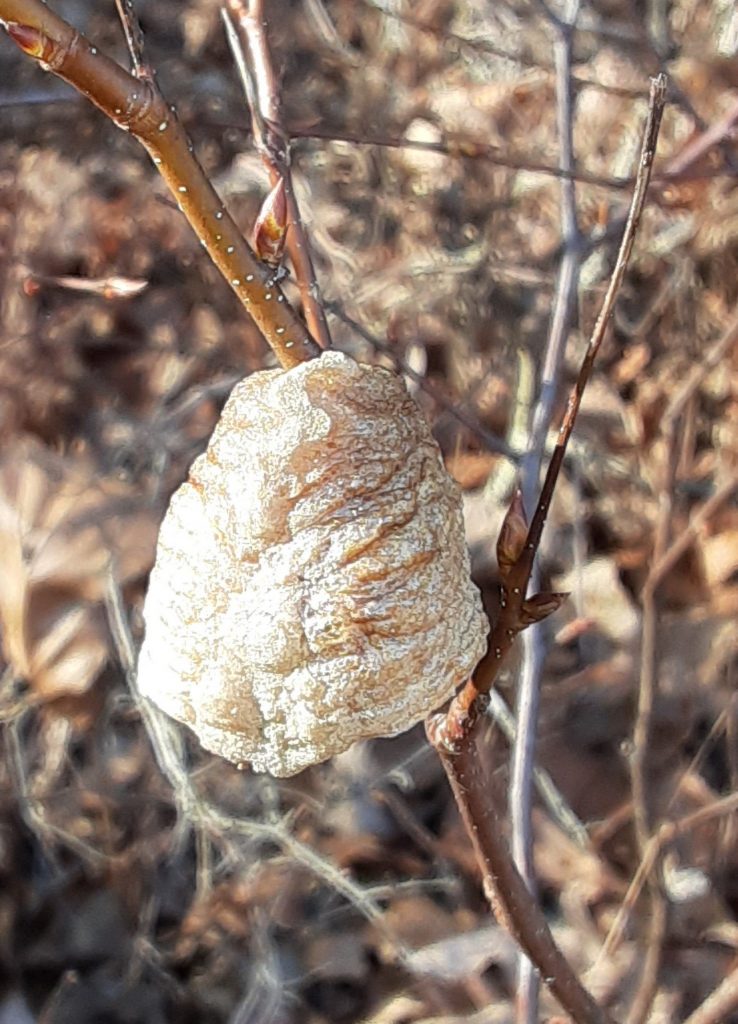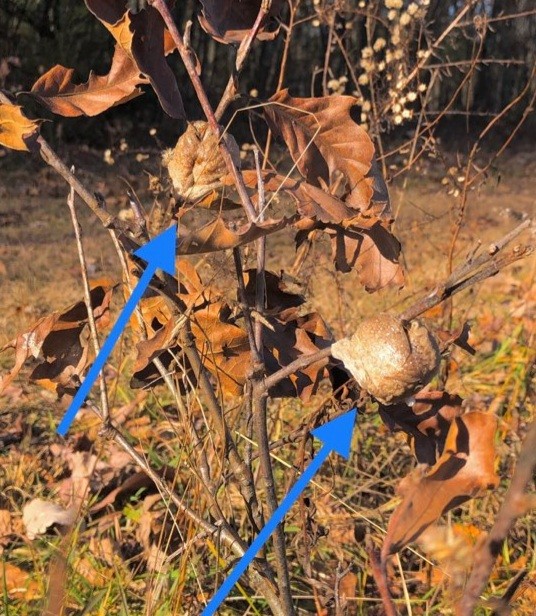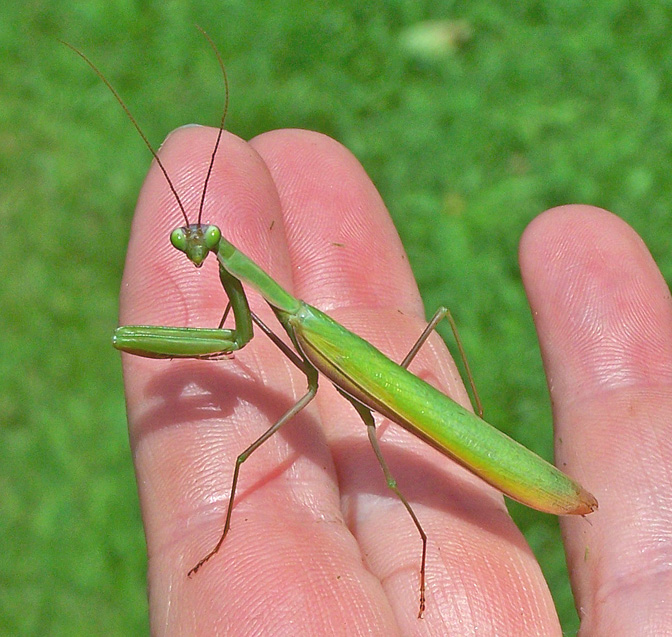By, Susan Sprout
Silly me! It isn’t the season for finding a Praying Mantis in the garden, is it? Well, how about the next generation, hmm?
Late fall and winter are most excellent times to find their egg cases attached to small leafless shrubs and trees. We found some on our last hike – enough to make a certain grandpa I know, a star in the eyes of his seven-year-old bug-crazy grandson!

Praying Mantis only live for about a year. The larger female will deposit a frothy mass of eggs produced by glands in her abdomen on stems and branches before she dies. The froth hardens, making a tough, protective capsule for her progeny until they all break out at once as wingless nymphs between mid-June and early July. You should be able to recognize the egg capsules, or ootheca, if you have ever used expansion foam to fill cracks around your home. They look just like it, small with a beige color that acts to camouflage them nicely against the bark on which they are attached.

The Praying Mantis got its name from the position of its forelegs, held up and forward, as in an attitude of prayer. Those legs are adaptations that allow them to better capture and hold the insects they eat. Carnivores that only eat live food, they stalk their prey with…slow…stealthy…movements…until… they…POUNCE – with amazing speed and precision. Should we change their name to “preying,” instead? They have a fine reputation as pest-eaters in gardens, but they show no distinction between good bugs and bad bugs and will chow down on pollinators like bees and butterflies as well!



